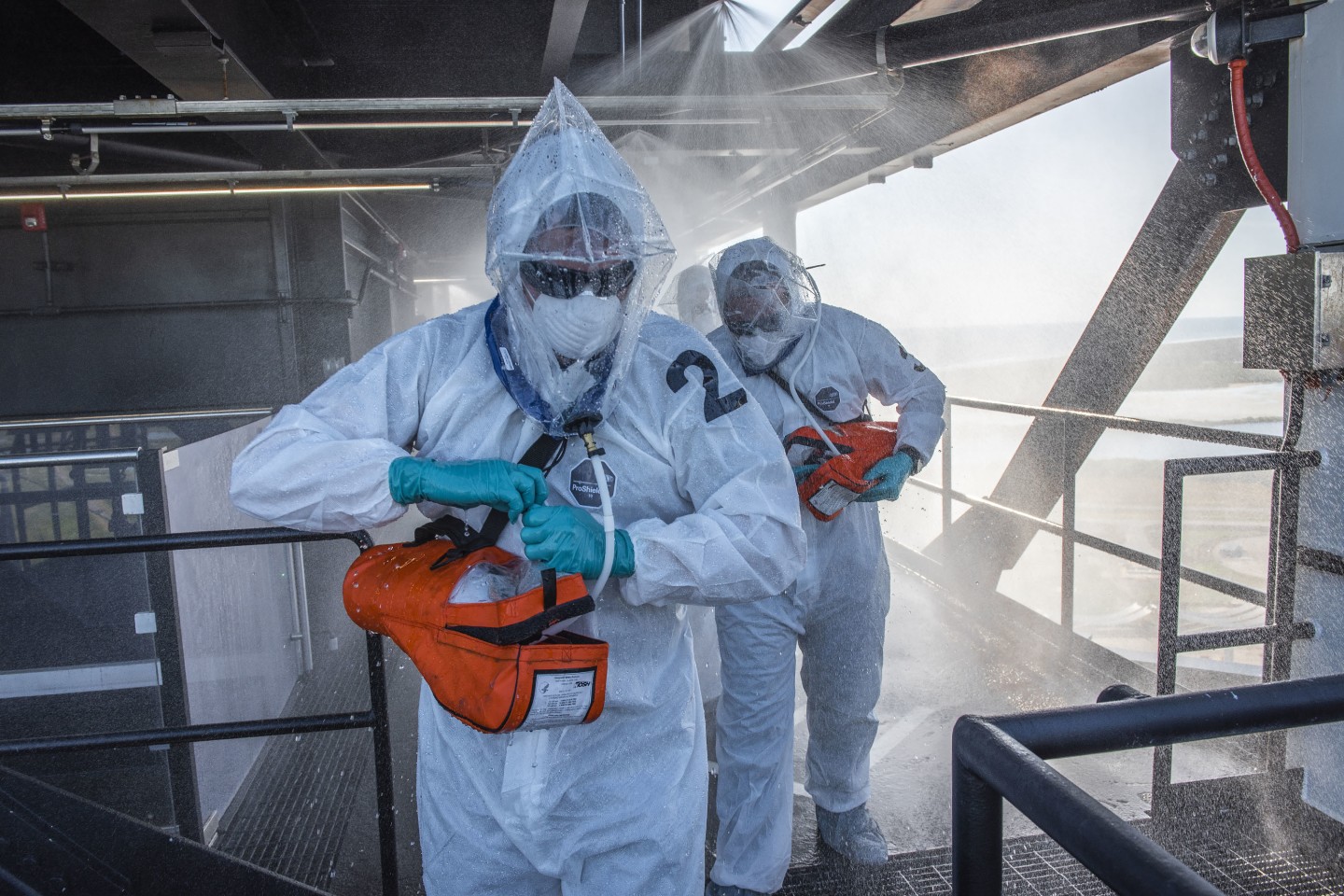NASA and SpaceX have carried out a test of launch pad evacuation systems as part of the run-up to the first manned flight of the Crew Dragon. On April 3, 2020 at Launch Complex 39A at the Kennedy Space Center in Florida, teams conducted an end-to-end demonstration of the technology and procedures for quickly removing astronauts and ground crew from the launch tower in the event of an emergency.
Filled with highly explosive and even toxic propellants, any space launch operation is potentially very dangerous. Ones where astronauts are aboard are even worse because a larger ground crew needs to be on the launch tower until relatively close to lift off time.
Since the days of the Apollo program, NASA has operated various systems to evacuate the launch complexes used for manned missions. For Saturn V launches, each tower was equipped with high-speed elevators, slide chutes, wire slides, and air-tight bunkers that the astronauts and crews could use to get away from the rocket and shelter from fire and explosions until rescue crews arrived.

SpaceX
The wire slide system, where astronauts and ground crews escape using gondola baskets, was retained for the Space Shuttle launches and has continued to be developed for manned commercial missions. The present system uses two methods to escape from the white room on the crew access arm at the 265-foot (81-m) level of the launch tower.
One is the high-speed lift that can reach ground level in under 30 seconds from which the personnel can be driven to safety. The second is the wire slide that delivers even injured personnel to the ground away from the tower to be collected by Mine Resistant Ambush Protected (MRAP) vehicles staged at the pad perimeter. Meanwhile, alarms and fire suppression systems are also activated to buy time for the evacuees.
The first manned flight of the Crew Dragon (Demo-2) is scheduled to launch after May 2020 and will certify the spacecraft before it begins regular flights to the International Space Station (ISS).
Source: NASA
Source of Article